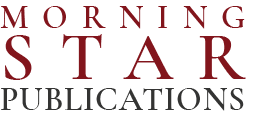As the cultural landscape becomes more diverse and nuanced, organizations must master speaking authentically to diverse audiences. Multicultural and inclusive marketing are powerful tools that transform brand-consumer relationships. These strategies create meaningful experiences, driving loyalty and insight. Let’s explore each and their significance for modern marketing success.
Multicultural marketing targets a specific cultural or ethnic group, crafting messages that speak to the segment’s values, traditions, and language. It ensures that the message is seen and felt in a way that is truly resonant with the group in question.
One of the most successful multicultural marketing campaigns was Coca- Cola’s adaptation of its ‘Share a Coke’ campaign for the Chinese New Year. The company replaced the ubiquitous logo with a dragon, a symbol of wealth and good fortune, which embodies the spirit of the Chinese New Year. This kind of personalization drove higher engagement by appealing directly to individual identities and cultural pride.
Tips for effective multicultural marketing
• Research, research, research: You’ll need to adjust your approach to your target demographic’s culture, interests, and media consumption habits.
• Celebrate linguistic diversity: Incorporate bilingual or culturally specific language options to foster connection and engagement.
• Peer-to-peer messaging: Partnering with influencers or celebrities who are part of or resonate with the target community will increase the authenticity and spread of your messaging.
Inclusive marketing: Reflecting a world of differences
Inclusive marketing strives to represent the diversity of humanity and appeal to a broad range of consumers so that no one group is excluded from the story. This approach focuses on diversity across all axes—race, gender, age, sexuality, and ability.
Microsoft’s ‘We All Win’ campaign, which centered on the Xbox Adaptive Controller, exemplifies how a company with a genuinely inclusive product can seize the opportunity to create an inclusive marketing campaign. This campaign demonstrated the product and the experience it can deliver and expressed Microsoft’s commitment to inclusivity.
Tips for inclusive marketing
• Include diverse representation: Your marketing materials should include diverse representations of society in all its forms.
• No stereotypes: Strive for authentic, nuanced portrayals that respect individuality and avoid stereotypes.
• Ask for feedback from multiple camps: Reach out to a wide demographic of consumer groups, asking for their feedback to ensure respectful and resonant marketing and to gauge whether the message is too focused or weak.
How diverse marketing strategies propel innovation
Multicultural and inclusive marketing strategies can also help brands improve their perception among consumers and become more innovative. When companies recognize the differences between market segments and pay attention to them, they can find new opportunities and learn new things they might not have otherwise. Here are a few strategies:
• Diversity at every level: Your marketing team should be staffed with people who can help inform and challenge the status quo.
• Measure and adjust: Keep your diversity machinations in check by constantly measuring their effectiveness, and be prepared to adjust them in light of feedback.
• Train your team: Regular training on cultural competence and sensitivity can help avoid unforced errors and improve the effectiveness of your marketing efforts.
Interested in harnessing the power of inclusive marketing? Contact Hook PR & Marketing today to elevate your strategy and connect with a diverse audience. Email in**@****pr.com or call 302-228-6689.
About the author
Hook PR & Marketing supports nonprofit organizations in telling their stories to donors and other audiences. Is your organization looking for expert counsel with messaging to donors, volunteers, or clients? Contact us at info@ hookpr.com.

